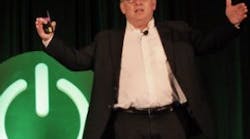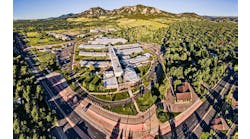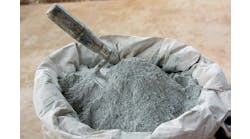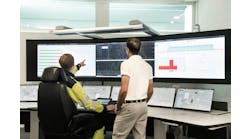“We can see the profit impact of everything done in the plant, and by the way, we can show that engineers drive profitability by measuring it and making it visible.” Schneider’s Peter Martin on the bottom-line benefits of real-time profitability control.
Digitalization has been around for 40 years, so why are we talking so much about it now? It’s been a force behind huge improvements in productivity, “But, along the way, it’s gone from the means to an end to an end itself,” said Peter Martin, vice president, innovation and marketing, Schneider Electric, in his plenary session at this week’s Foxboro User Group conference in San Antonio, Texas. Today, “It’s reached a point where we can stop focusing on the technology itself, and start focusing on profit.“When we began applying computers in control systems, I was brought from data processing to control, where we would use control engineers to solve problems, then use computers to implement the solutions. Digitalization changed control—the language went from PID and cascade to bits and bytes, and the perspective of the industry went from solutions-driven to technology-driven. Call it an expert system and it will sell, it didn’t matter if it solved a problem.
“We had to focus on the technology because it was so complex. Now the technology is established to the point where we can return our focus to solving problems. We can go from ‘Connect everything together and something good is bound to happen’ to defining and solving problems.”
Business problems are moving from transactional—the IT world—to real-time, the domain of operations technology (OT) and control systems. For example, the costs of energy and materials used to be fixed by contracts for months or a year.
Now, the prices of electricity and oil change every five to 20 minutes, depending on where you are. The prices of metals change once or twice a minute. “You can’t control profitability on a monthly basis when critical costs change every 15 minutes,” Martin said. “As a result, our job changes. We’re the ones who control in real time. We understand it, we can make it happen.”
A whiteboard moment
The designs of present-day DCSs, PLCs and controllers date back to the 1970s. They are computer architectures imposed on a plant. The focus has been on making control systems less expensive, to do the same job for less, Martin said. “But there’s tremendous amounts of value to be gained using them instead to drive value by activating operations,” Martin said. To do this, “We erase the whiteboard and reimagine the control system.”
Value is driven by functionality, not the platform. “Greg Shinskey once told me that there’s two kinds of control: automatic and manual,” Martin said. We’ve always tried to minimize manual control, but instead, “We can get the workforce into the control loop to drive operational profitability.”
Operational profitability depends on obtaining the most value from the plant assets. To use operations to drive asset performance safely and reliably, we must converge the process-centric view of the control system with the asset-centric view of maintenance, Martin said.
“We can maximize value by using operations to drive the process for profitability while balancing the risks of reliability, safety and cybersecurity,” Martin said. “We can use technology to make every asset self-optimizing, to maximize its performance and monitor its condition. We can model reliability risk, and control it.”
For example, one can see reliability issues and respond by adjusting operations to extend time to failure, and schedule production to allow planned maintenance. Similarly, one can model safety and environmental risk with reliability and consequence factors, determine cybersecurity risks, and control them.
One can also measure and control profitability in real time, Martin said. “We can see the profit impact of everything done in the plant, and by the way, we can show that engineers drive profitability by measuring it and making it visible,” Martin said. “Some people say the heyday of the control engineer was in the 1960s and 1970s, but Shinskey told me, it’s still coming.”
In this model of advanced control, profitability becomes the primary loop in cascade control, constrained by reliability, safety and efficiency. “In the past, we might do theory of constraints with one optimization,” Martin said. “Now we have the power to do all the constraints at once.”
APM in real time
At today’s speed of business, plant operators can’t wait for decisions to come down from the C-suite. Meanwhile, operators are reading newspapers, waiting for exceptions. When they make changes, they do them without advice or feedback. “They don’t know better,” Martin said. Instead, “Give them information about the impact on profitability. When they can see that advanced control and optimization systems improve profitability, they won’t put them in manual. If it’s working, they’ll keep it on.”
Martin showed how a profitability information system on the steam generating facility at a Sasol plant is saving $6 million per year simply by showing operators the cost impacts of their control decisions. “A DCS is also a learning system, providing feedback to the operators,” Martin said.
It’s not sufficient to use ERP information to make profit measurements, as ERP numbers are averaged over time. “You need to measure at the cost point in real time. Then you have very accurate costs,” Martin said. “We started by adding real-time accounting models to the DCS, but that’s a slow process. It might take six weeks to analyze an application, review the sensors, and implement the system. Now we can build it into the DCS and controllers.”
Process historian data can be used to determine the potential benefit by back-calculating the potential savings. “Along the way, we can find optimized operations and golden batches,” Martin said. “We can see the effects and optimize the timing of catalyst changes and heat exchanger maintenance, for example.”
EcoStruxure Profit Advisor offers industry-specific plug-ins that can be quickly customized to a specific plant. “This reduces a six-week process to perhaps two days,” Martin said. Profitability can also be predicted using simulation and a digital twin, he added. “Operations can put a proposed change into the simulator and fast-forward to see its future effect before they decide to implement it in the plant.”
Asset performance management is a valuable concept. “Now we’re moving it to the control domain to do it in real time for safety, efficiency and reliability,” Martin said. The result is “a profit engine for industry. Your industrial automation investment will become the profit engine of your business.”
The editors of Control, Control Design and Smart Industry were on site at the 2018 Foxboro User Group conference to bring you breaking news, innovations and insights from the event. Now that the event is over, the editors have put together an event report featuring the top news. Get your copy today.





